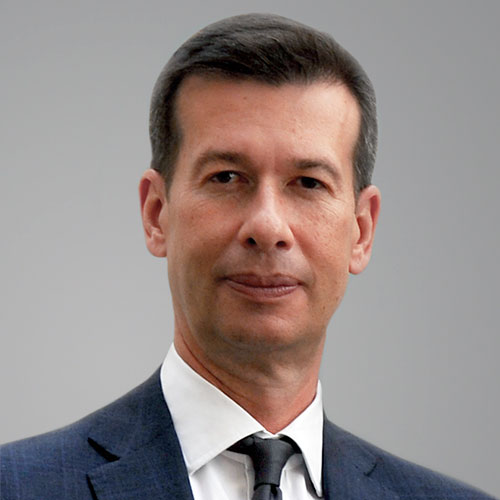Kier Boley
Co-Head and CIO of UBP Alternative Investment Solutions (AIS)
The content of our website is not intended for persons resident, or partnerships or corporations organised or incorporated inside the United States (“US Residents”). UBP does not market, solicit or promote its services inside the jurisdiction of the United States at any time. The content provided on the UBP website is intended to be used for general information purposes only. Therefore, nothing on this website is to be construed as an investment recommendation or an offer to buy or sell any security or investment product, nor as a guarantee or the future performance of any security or investment product.
To browse on UBP.com, please confirm that you are not a US resident.

Hedge funds offer diverse investment approaches to generate returns uncorrelated to traditional markets.
Hedge funds provide a compelling way for investors to diversify their portfolios and enhance risk-adjusted returns. With a vast array of strategies spanning asset classes and geographies, hedge funds can deliver exposure to differentiated sources of return, helping to mitigate overall portfolio risk. At UBP, we have been investing in hedge funds since 1972, making us one of the pioneers and most experienced players in the industry. Our rigorous manager selection process and portfolio construction expertise enable us to craft bespoke solutions tailored to our clients’ objectives.
The case for hedge funds
In an environment of heightened volatility and uncertainty, hedge funds can play a valuable role in investors' portfolios.
With interest rates likely to remain higher for longer, dispersion and volatility across sectors and asset classes should continue to create attractive opportunities for hedge funds. As hedge funds’ performances have picked up in recent years, we see the asset class as a valuable complement to traditional portfolios.
We view hedge funds as a strategic allocation with a 3–5-year investment horizon. Our investment philosophy is centred on rigorous manager selection and portfolio construction.
In-depth analysis to identify skilled managers with robust methods and track records.
Creation of diversified portfolios for risk control and steady return profiles.
Partnering with clients to craft bespoke solutions matching their wider asset allocation.
Monitoring underlying managers and portfolios to constantly adapt to market conditions or manager circumstances.
Our hedge fund selection process leverages the profound experience of our Alternative Investment Solutions team, which has invested in the asset class for decades. By combining top-down market views with bottom-up manager research, we aim to identify the most compelling hedge fund opportunities while rigorously managing risk.

Engage with our Alternative Investment Solutions team to discover how our hedge fund expertise can help you build a more resilient portfolio.
We provide a range of hedge fund solutions to address different investor needs.
UBP named Best Private Bank in Europe for Alternatives
At UBP we have been at the forefront of alternative investments since the 1970s. We are honoured to have been singled out for the award of Best Private Bank in Europe for Alternatives by PWM & The Banker. This prestigious recognition highlights our team's expertise and commitment to providing outstanding solutions for our clients.
PWM & The Banker Global Private Banking Awards 2025*
* Past performance is not a guide for current or future results.

"At UBP, we believe alternative investments should be a strategic allocation in our clients’ portfolios. Focusing on a broad set of strategies that generate pure alpha allows us to offer tailor-made solutions that provide attractive and diversifying sources of returns, irrespective of the overall market conditions."
Investor Insights
Hedge funds can provide access to uncorrelated sources of return that are unavailable through traditional assets, potentially improving portfolio diversification and risk-adjusted returns.
Key risks include selecting the wrong manager and needing to be adequately diversified. Thorough due diligence and robust portfolio construction are essential to mitigate these risks.
Assess your portfolio's risk factor exposures and build your hedge fund allocation to provide complementary exposures. Selecting a trusted partner with extensive hedge fund expertise is also vital.
UBP's Alternative Investment Solutions team, led by Kier Boley and John Argi, leverages its members’ average industry experience of close to 20 years to identify top hedge fund managers globally. The 26-person team's collaborative approach and rigorous due diligence enable the construction of high-conviction portfolios.
Key facts and figures
Kier Boley
Co-Head and CIO of UBP Alternative Investment Solutions (AIS)
John Argi
Co-Head UBP Alternative Investment Solutions (AIS)